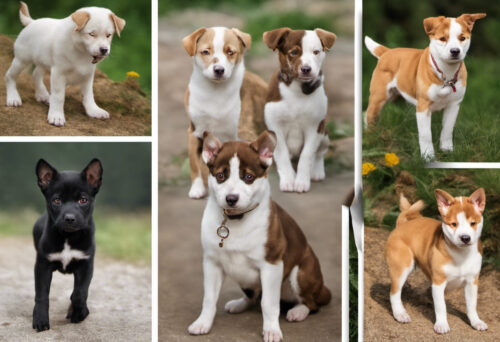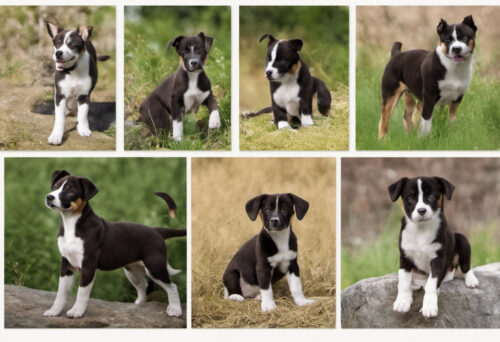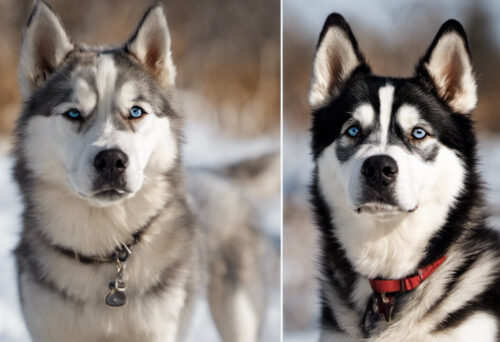Welcome to the vibrant world of Pitskys! If you are someone who is fascinated by both Pitbulls and Siberian Huskies, then hold on to your leash, because when these two remarkable breeds come together, they create a unique hybrid known as the Pitsky. This detailed and comprehensive guide will provide insights about all the essential aspects pertaining to a Pitsky’s traits, lifespan, grooming, and training requirements. We’re sure you’ll fall tails-over-paws in love with this breed.
What exactly is a Pitsky?
A Pitsky is a hybrid breed, a delightful mix of an American Pitbull Terrier and a Siberian Husky. They are medium to large-sized dogs, known for their intelligence, high-energy levels, and loyalty. Whether you’re thinking of adopting, fostering, or just curious about what it takes to own a Pitsky, you’ve come to the right place.
Temperament And Personality
A Pitsky is an absolutely delightful breed that is full of life and enthusiasm. They are highly intelligent, social, and joyfully energetic dogs who get along well with children and other animals. But their outstanding trait is their immense loyalty, often forming a strong bond with their human counterparts. It’s exactly this kind of companionship that pet owners look for when they bring these beauties into their homes.
Understanding a Pitsky’s energy level
Pitskys are lively and energetic dogs inherited from their parent breeds, the American Pitbull Terrier and the Siberian Husky. These breeds are known for their exuberant activity levels. Still, it’s worth noting that a Pitsky’s activity requirements will be significantly higher than a traditional breed’s, so be prepared for lots of playtime, walks, and love!
Health and Life Expectancy of a Pitsky
The life expectancy of a Pitsky is around 12-15 years, which is relatively high for a dog of their size. However, like any breed, they are prone to certain health conditions. Most commonly, Huskies can suffer from eye problems and hip dysplasia; Pitbulls, on the other hand, can be vulnerable to skin issues and certain forms of congenital heart disease.
Since the Pitsky is a mixed breed, they can inherit health issues from either parent, so it’s crucial to maintain regular vet check-ups and opt for genetic testing if possible.
Grooming Your Pitsky
Caring for your Pitsky’s coat isn’t a mammoth task, but regular grooming is needed. As both parent breeds have short to medium length coats that shed, expect your Pitsky to shed throughout the year, with heavier shedding in the spring and fall seasons.

Basic Grooming Tips
Dealing with a Pitsky’s shedding can be effectively managed by brushing their coat 2-3 times a week. This not only keeps the shedding under control, but also keeps their skin healthy by distributing natural oils evenly. Using a deshedding tool can keep their coats looking sleek. Additionally, bathing should be done every 6-8 weeks using a mild dog shampoo to maintain the quality of their coat and avoid skin problems.
Don’t forget about their oral health! Brush their teeth a few times a week, and provide toys that promote dental health. Get their nails trimmed once or twice a month depending on how quick their nails grow. You should also clean their ears regularly with a gentle, dog-specific ear cleaner.
Training your Pitsky
Pitskys are smart and eager to please. However, this doesn’t mean they are easy to train. Just like with any breed, consistent, positive reinforcement is the most effective training method. Ignoring bad behavior and rewarding good behavior with treats, praise, and playtime is the key to successful training. Pitskys respond best to variety, so mixing up their training exercises will keep them invested and excited.
Starting Early
Remember, start training your Pitsky as early as possible. House training, basic obedience, leash training, and socialization should start at a young age. The ASPCA provides a comprehensive guide to help socialize your puppy effectively. Socialization is especially important for Pitskys due to their high energy levels and natural vigilance.
Consistency is Key
Being consistent with commands will help your Pitsky understand what you expect from them. Avoid changing the commands once your dog starts to understand them. Consistency will avoid confusion and speed up the training process.
Is A Pitsky Right For You?
Before deciding whether a Pitsky is the right companion for you, it’s necessary to consider whether your lifestyle is compatible with their needs. Siberian Huskies are sled dogs and they have a natural urge to run and play. Pitbulls are also strong and active. Hence, Pitskys need lots of exercise, mental stimulation, and space to move around. They aren’t suitable for apartment living or families that aren’t active.
You’ve now taken a deep dive into the world of Pitskys and learnt about their care, training, and health. If you feel that a Pitsky would be a good addition to your family, then consider rescuing one from a shelter or consider ethical breeders. Do remember, a pet isn’t just for a season, it’s a commitment for their entire lifetime.

Diet and Nutrition
Pitskys, like their parent breeds, have high energy levels and require a balanced diet to support their active lifestyles. They also need enough proteins for muscle development and certain healthy fats for a shiny coat. Pitsky owners should ensure a consistent diet, ideally split into two meals a day, with caution towards overfeeding to prevent obesity. Also, providing plenty of fresh water is a must!
Beware of Food Allergies
Unfortunately, both Pitbulls and Huskies can be prone to food allergies, so their Pitsky descendants might inherit this disposition. If your Pitsky develops symptoms like skin irritation, loose stools, or chronic gas, it’s worth investigating potential food allergies with your vet.
Family Compatibility
Are Pitskys good family dogs? Absolutely! Because of their social and affectionate nature, they bond well with family members. They are also known to be patient with children. Given that, it’s always advisable to supervise playtime between any dog and young children to ensure safety for both.
However, because of their high energy levels and strength, they may suit homes with older children who can keep up with the Pitsky’s enthusiasm. Also, while they do tend to get along with other animals, being a mix of two breeds often misunderstood for aggression, early and continuous socialization is imperative.
Last Thoughts
From this article, it’s clear that owning a Pitsky is an exciting journey. Their high energy and enthusiasm, mixed with their intelligence and loyalty, have made them beloved pets to many families. They need a great deal of exercise, mental stimulation, and affection, but in return, they offer a whole lot of love and loyalty. Remember, owning a Pitsky is a long-term investment in your time and care, therefore it’s essential to make a well-informed decision.
Research, patience, care, and understanding can go a long way in raising this beautiful mix breed. But ultimately, what matters most is the happiness and well-being of your furry friend.
Embarking on the journey of owning a Pitsky can bring you endless joy and companionship. Your Pitsky could potentially end up being one of the best friends you’ve ever had. So buckle up, embrace the zesty charm of the Pitsky, and explore a world of loyalty, happiness, and boundless love!

